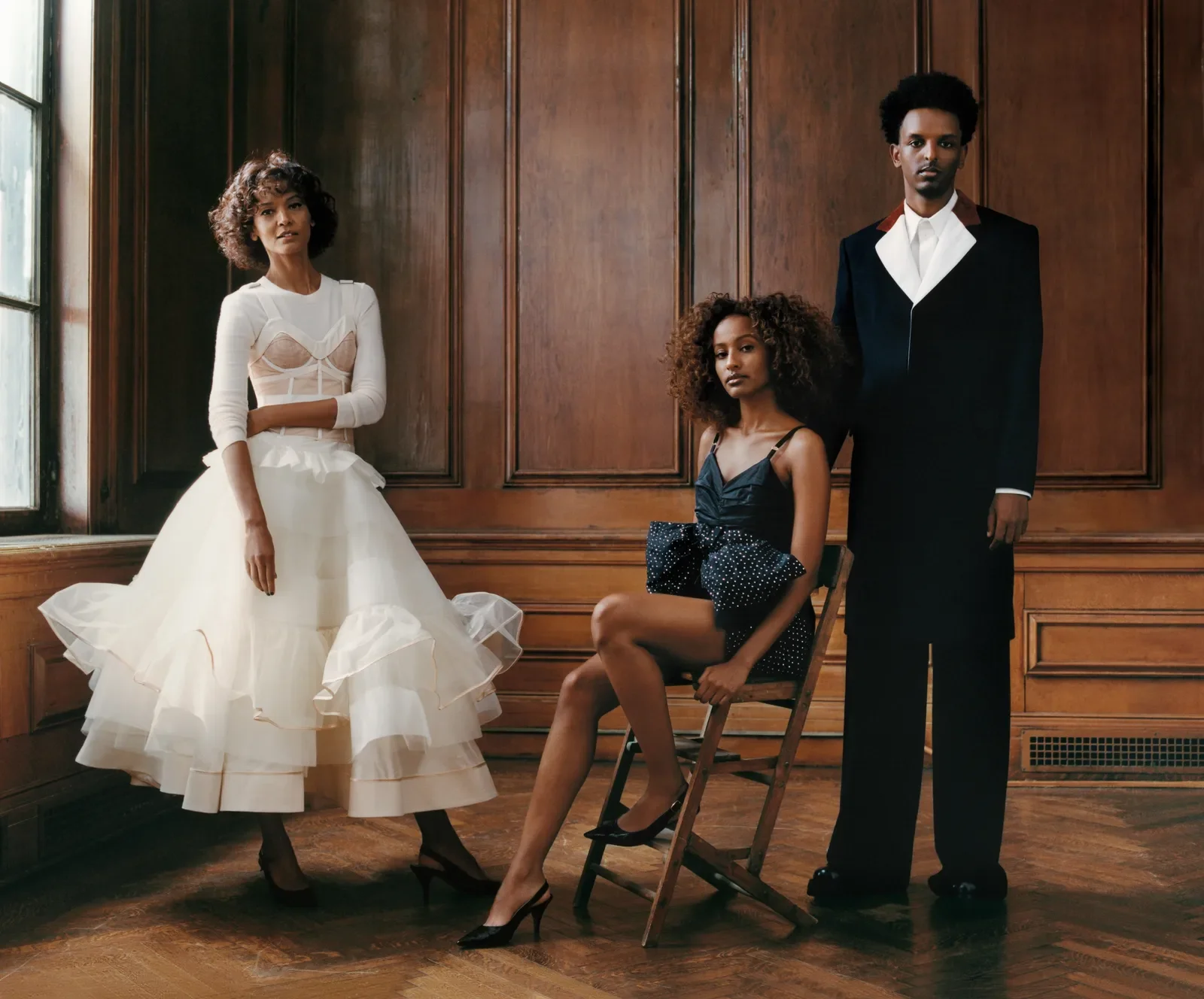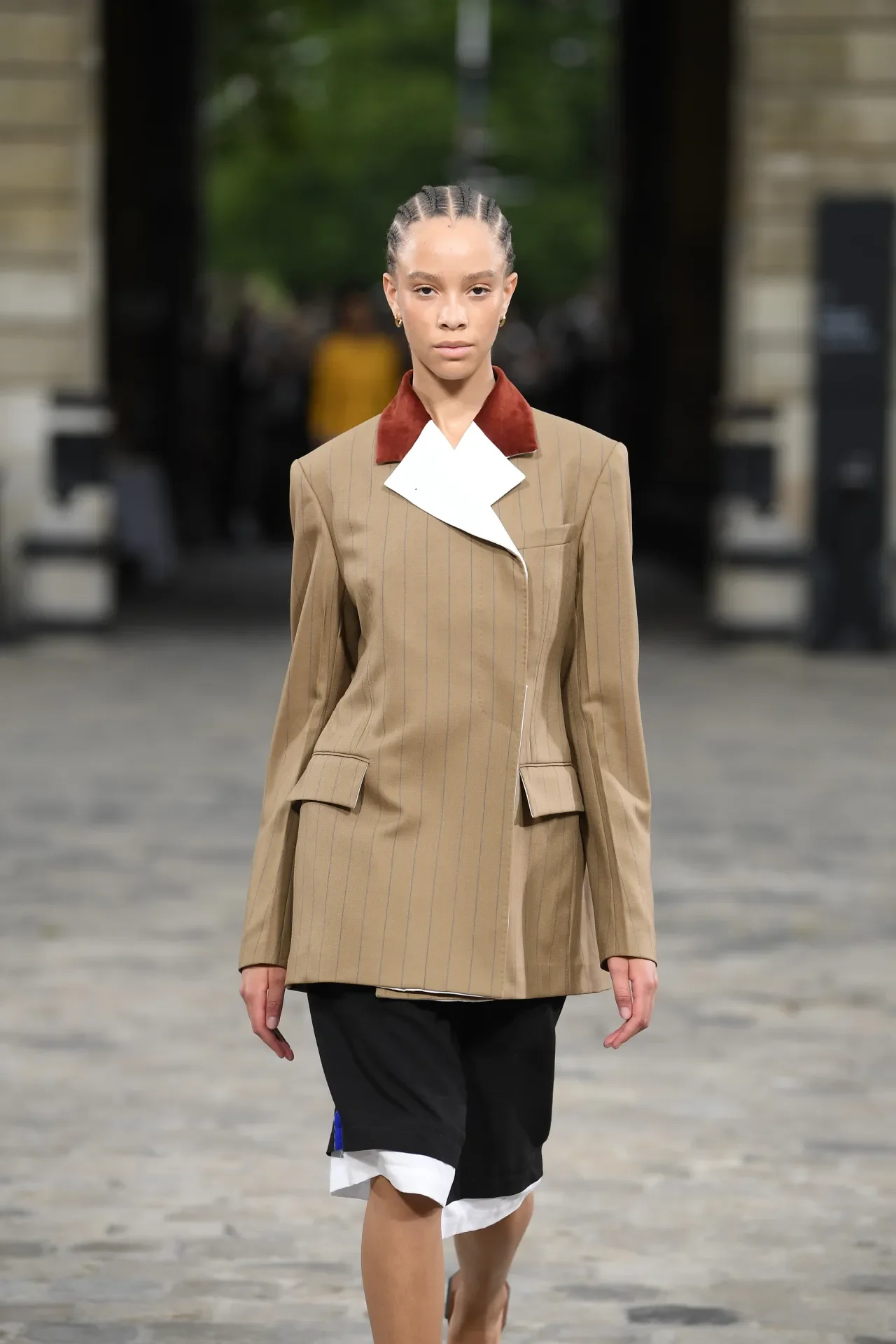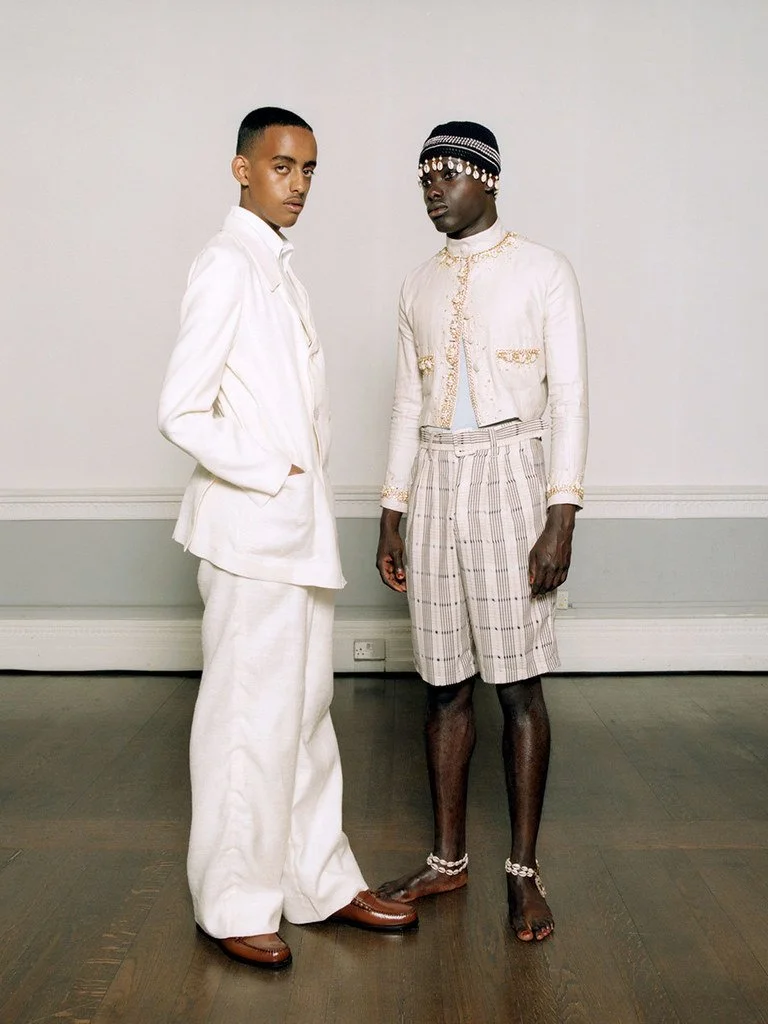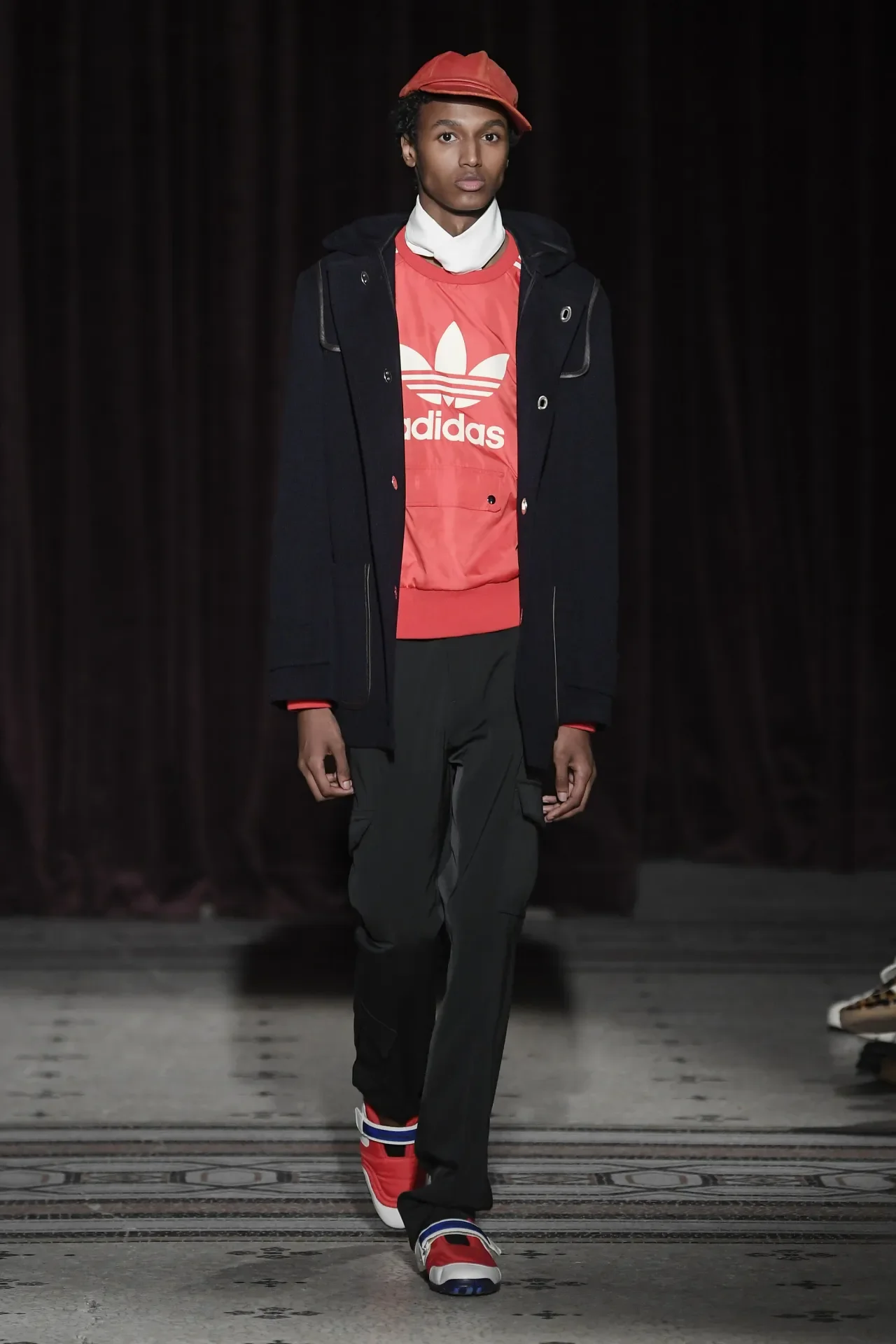Grace Wales Bonner: Where Form Meets Meaning
Grace Wales Bonner has always approached fashion as something larger than clothing — a lens through which identity, intellect, and heritage intersect. Her collections merge the discipline of tailoring with the spirit of research, making her one of the most culturally literate voices in contemporary fashion. As she prepares to join Marine Serre at Vogue’s Forces of Fashion conference, Wales Bonner continues to shape a narrative that feels both scholarly and sensuous: one in which design becomes a language of belonging.
Background & Philosophy
Born in South London to a Jamaican father and an English mother, Wales Bonner’s work has long been informed by duality — European refinement in conversation with Afro-Atlantic memory. A graduate of Central Saint Martins, she first drew attention for her menswear collections that challenged conventional notions of Black masculinity. For her degree show, she submitted not only a collection of garments but also a 10,000-word thesis titled Black on Black, exploring figures such as Charlie Parker, Jean-Michel Basquiat, and Kerry James Marshall. That union of thought and craftsmanship remains the heart of her practice: clothing as critical essay.
Her label, founded in 2014, traces histories across continents — the migration of symbols, music, and movement. Each collection feels like a small archive, balancing European construction with diasporic ornament, discipline with dream.
Image Credit: Wales Bonner
Design Approach
Wales Bonner’s design process unfolds like cultural choreography.
Tailoring as narrative: Her signature suits reinterpret Savile Row codes through softness and line — elegance as intellectual expression rather than power play.
Research as material: Collections draw from Black spiritualism, jazz, and literary canons as readily as from fabric swatches. The result is design that reads like an anthology.
Interdisciplinary collaboration: From Lynette Yiadom-Boakye’s poetry and Solange Knowles’s performance pieces to jazz compositions by Ishmael Reed, her shows function as creative gatherings, blending art, music, and philosophy into living ritual.
Art as parallel medium: Her 2019 exhibition A Time for New Dreams at the Serpentine Gallery echoed these impulses — garments shown alongside sculpture, sound, and text, an embodiment of mysticism and modernity in dialogue.
Image Credit: Vogue
Position & Influence
Wales Bonner’s influence expands far beyond fashion’s usual reach. In 2016, she won the prestigious LVMH Prize, validating her intellectual approach to design. Collaborations with Maria Grazia Chiuri at Dior and Meghan Markle’s choice of her design for the first official royal portrait extended her presence into both luxury and symbolism.
At 28, she stands as a designer who has rewritten Britishness through multiplicity — blending ancestry, academia, and aesthetic grace. Her collections are studied for what they reveal about identity and aspiration: the idea that fashion can be a vessel for philosophy, not just form.
Her forthcoming panel appearance at Forces of Fashion feels emblematic — not a debut but a continuation of dialogue, a reminder that design can still be an act of thought.
Image Credit: Vogue








